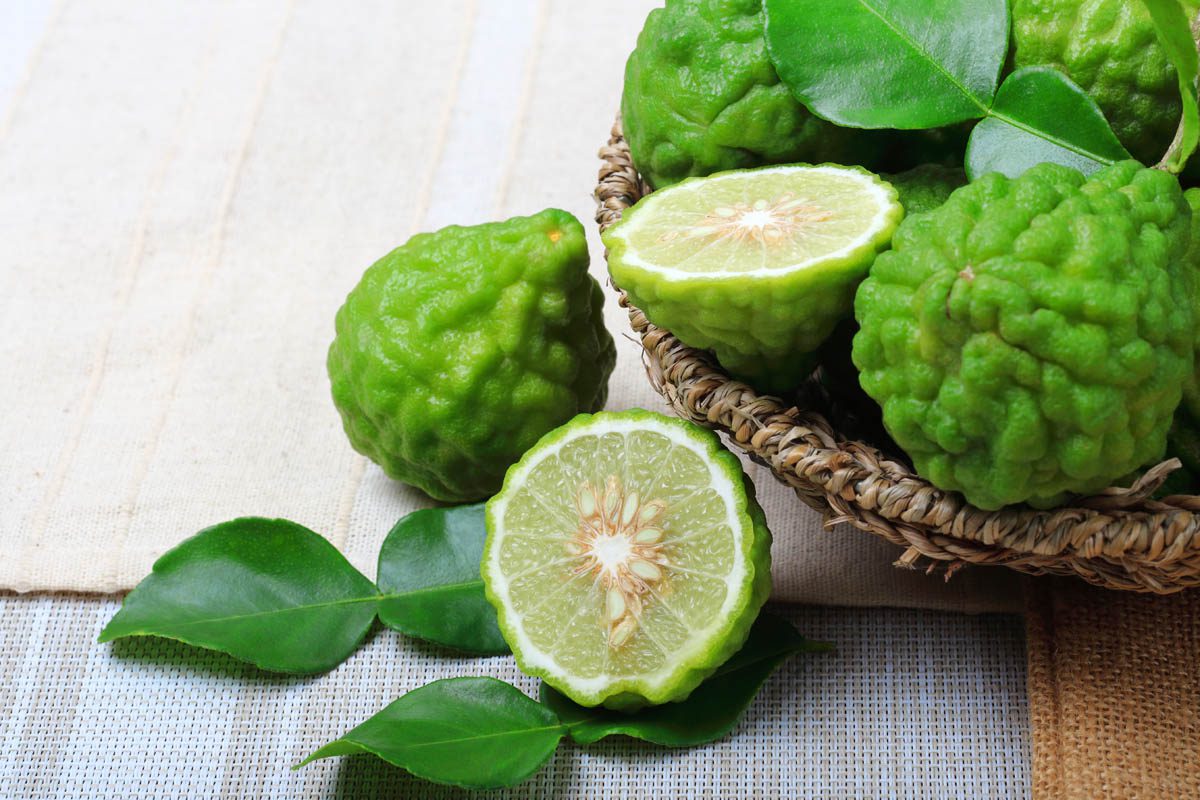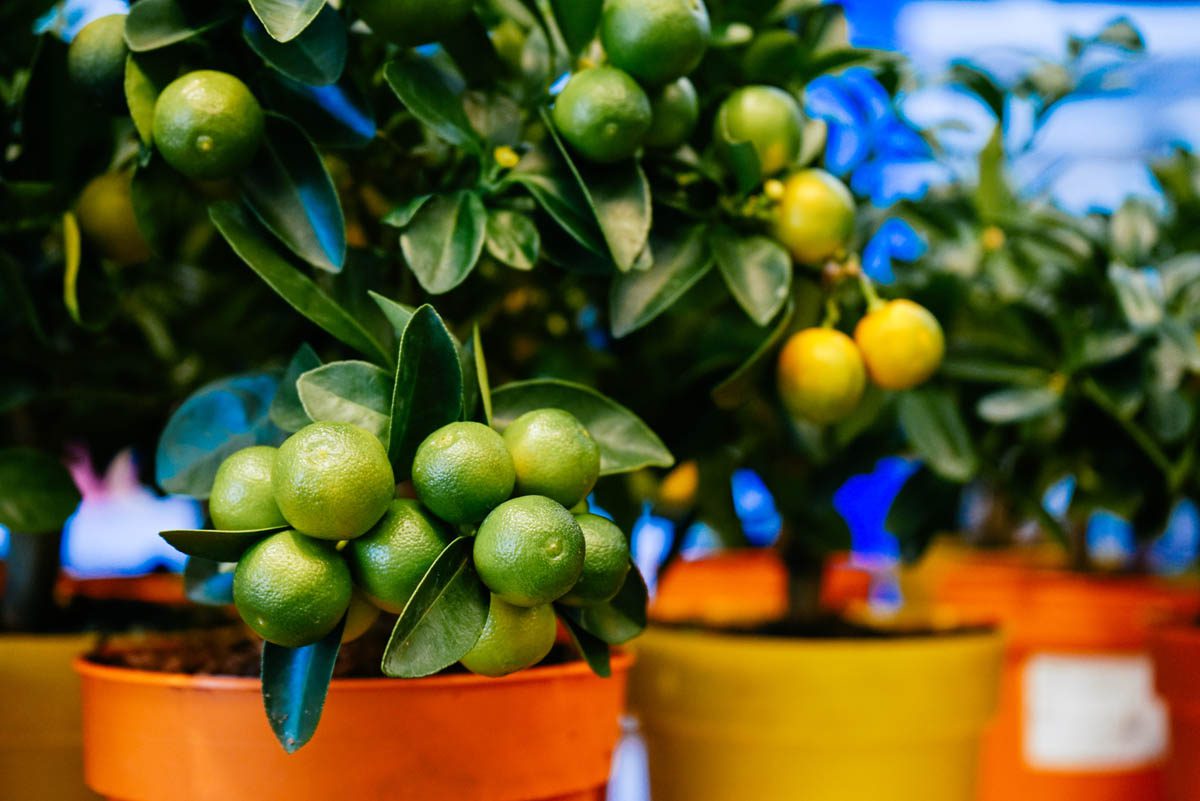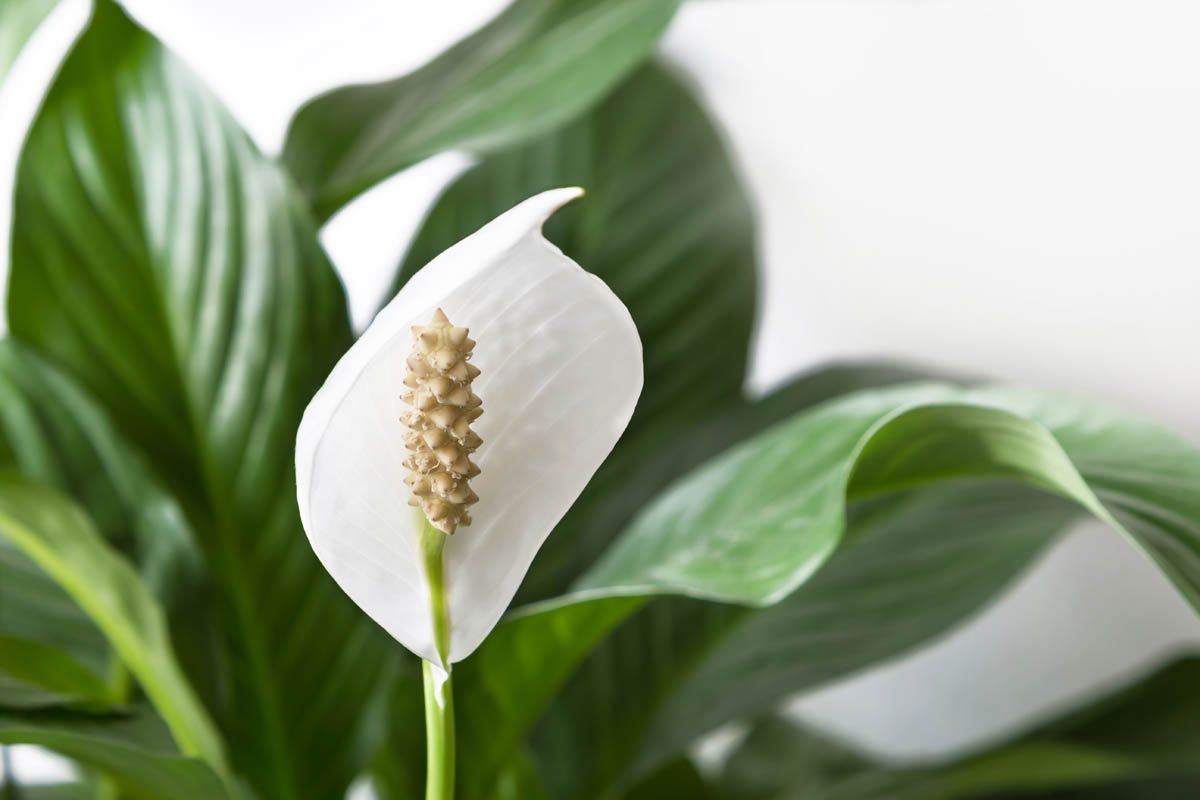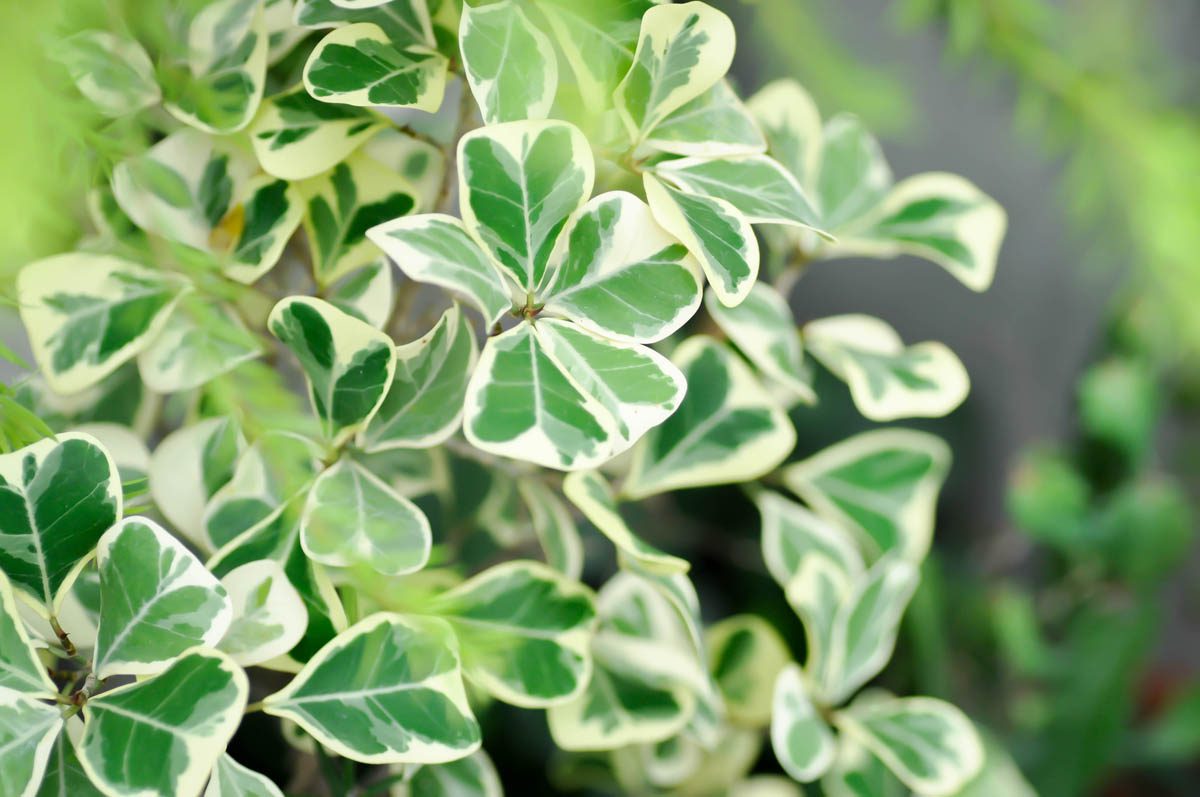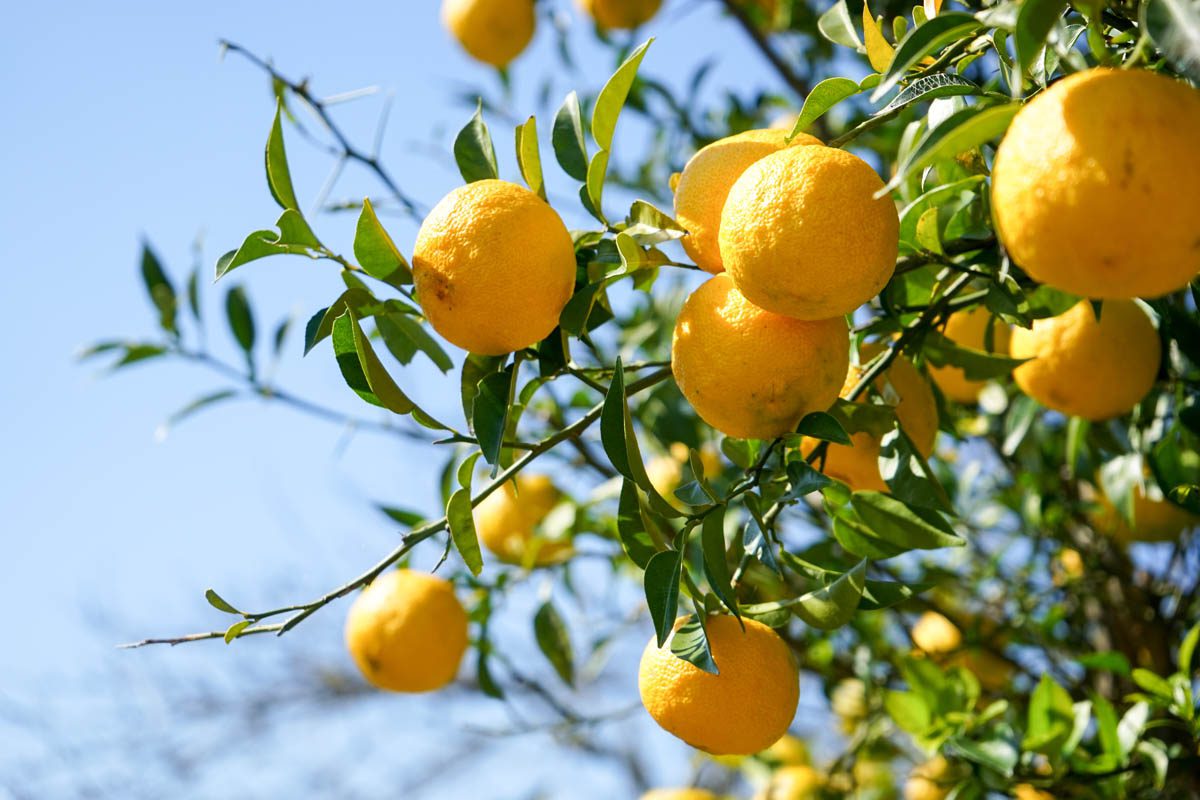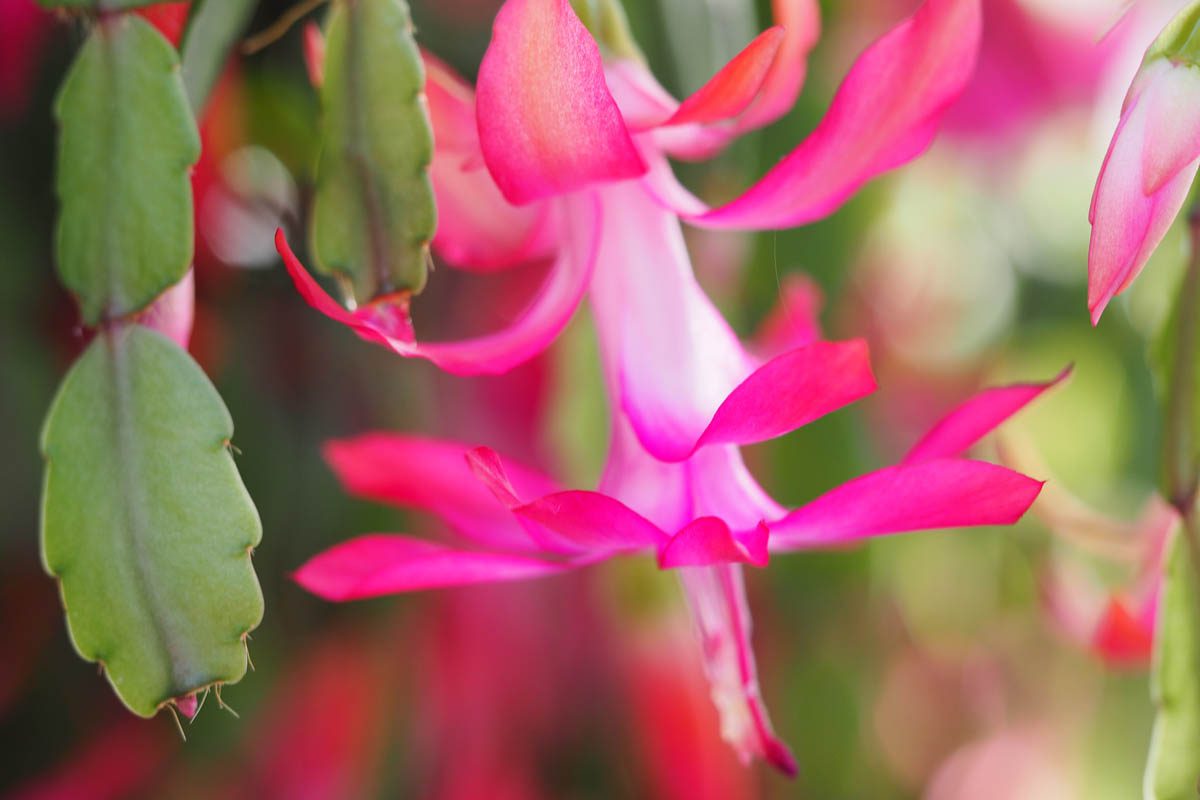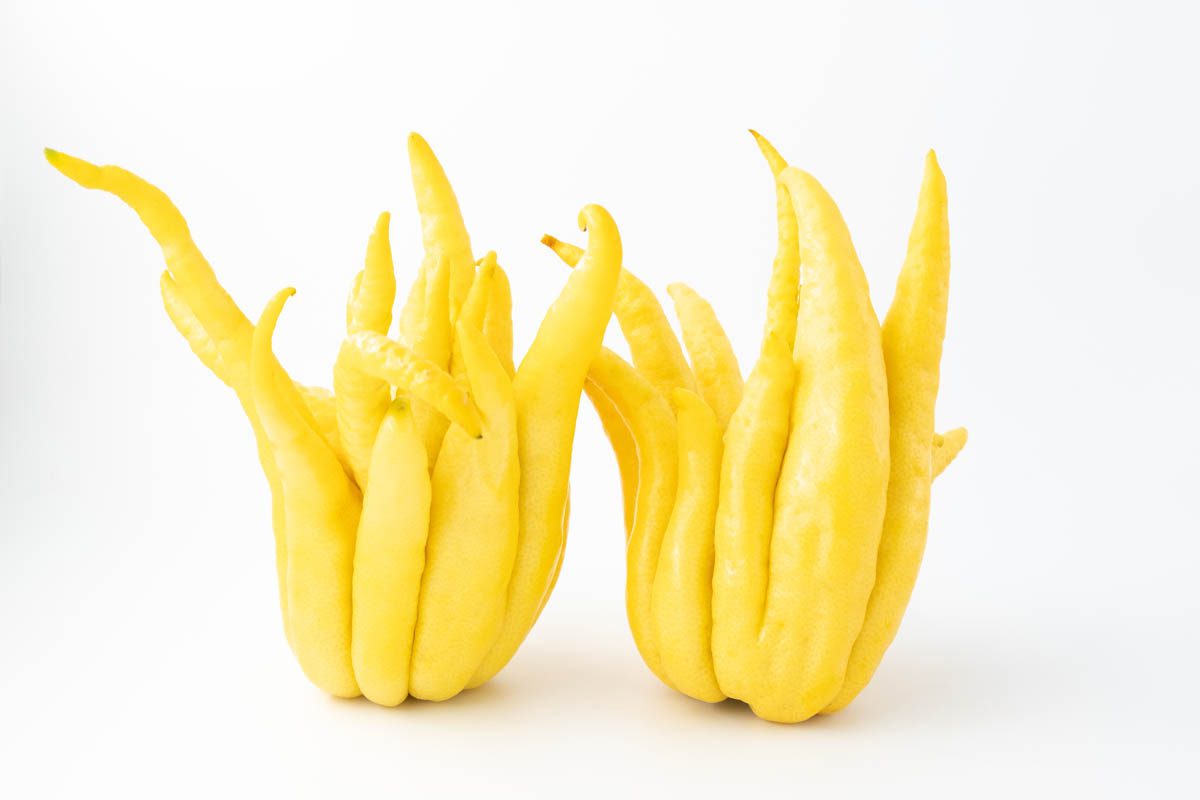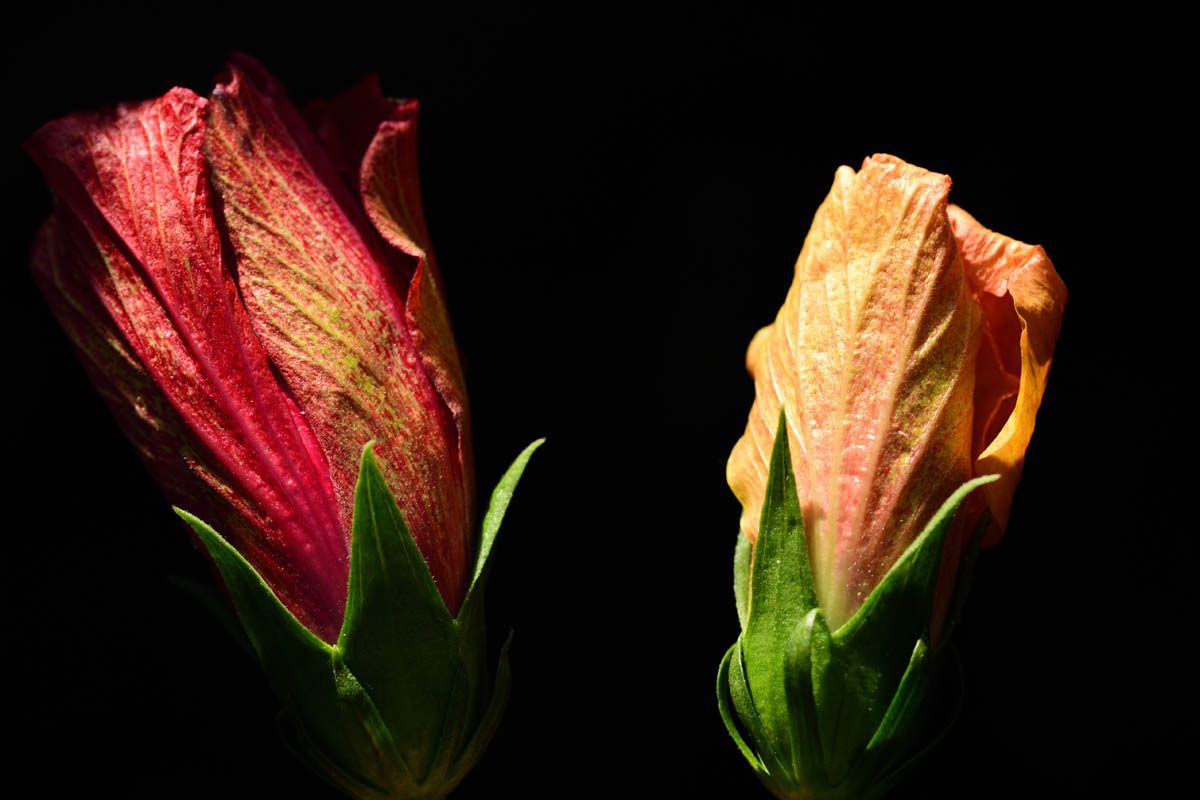Also known as kaffir lime, makrut lime (Citrus hystrix) is a citrus species native to Laos, Indonesia, Malaysia and Thailand. The fragrant leaves are a key ingredient in Thai cuisines, such as tom yum soup and green curry. The rind is typically used in marinades, dressings and salads. Makrut lime is also popular in Cambodia, Vietnam, Malaysia and Indonesia.
In addition to its widespread culinary use, makrut lime has been employed in traditional medicine to treat coughs, period pain, foot odour, wound healing, and skin and hair care. Makrut lime shows promise in the medical field for its antibacterial, antifungal, anticancer properties and antioxidant activity.
How does makrut lime get its citrus scent?
The leaves contain secretory cavities known as ‘schizogenous secretory cavities, leaf pellucid glands, or pellucid dots‘. These glandular cavities produce, store and release the essential oils responsible for the fresh lemony scent of makrut lime. Secretory cells produce volatile compounds, and the subcuticular space stores them. A cuticle surrounds the secretory cells to protect them and prevent essential oils from being released until they are damaged or disturbed.
The essential oil within the pellucid dots performs several functions, including defence against herbivory, protection against pathogenic organisms, insect repellent and attracting pollinators.
Pellucid dots are visible on citrus leaves in bright light. Here is a makrut lime leaf placed in front of a torch, which clearly shows the yellow pellucid dots.
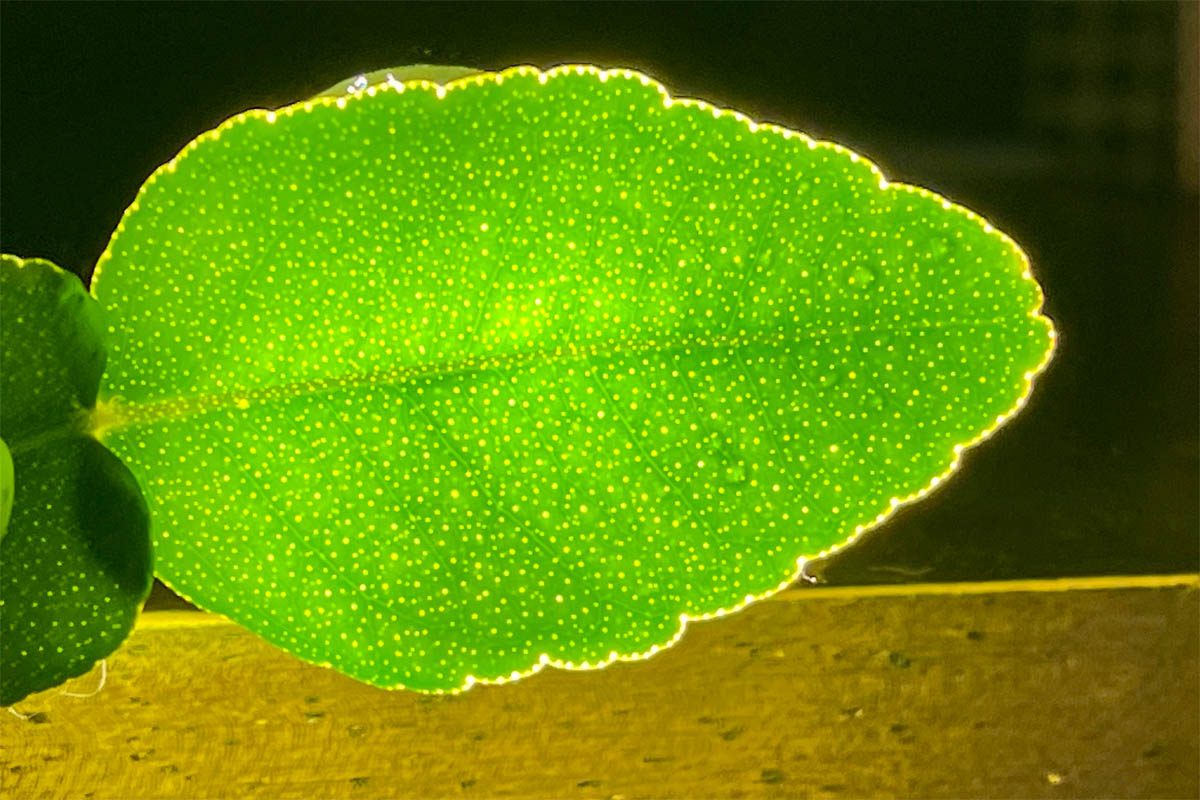
Local names for makrut lime:
- Thailand: Makrūd (มะกรูด)
- Indonesia: Jeruk purut
- India: Kaafir laim (काफ़िर लाइम)
- Malay: Limau purut
Related: Sudachi citrus
Julia is a writer and landscape consultant from Wollongong with a love of horticulture. She had been an avid gardener for over 30 years, collects rare variegated plants and is a home orchardist. Julia is passionate about learning and sharing her knowledge of plant propagation and plant toxicology. Whether it’s giving advice on landscape projects or sharing tips on growing, Julia enjoys helping people make their gardens flourish.
